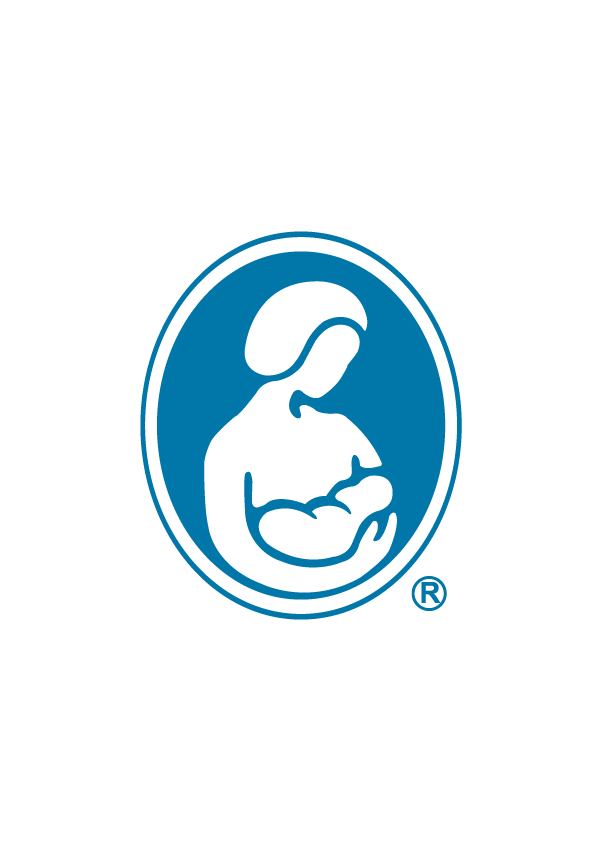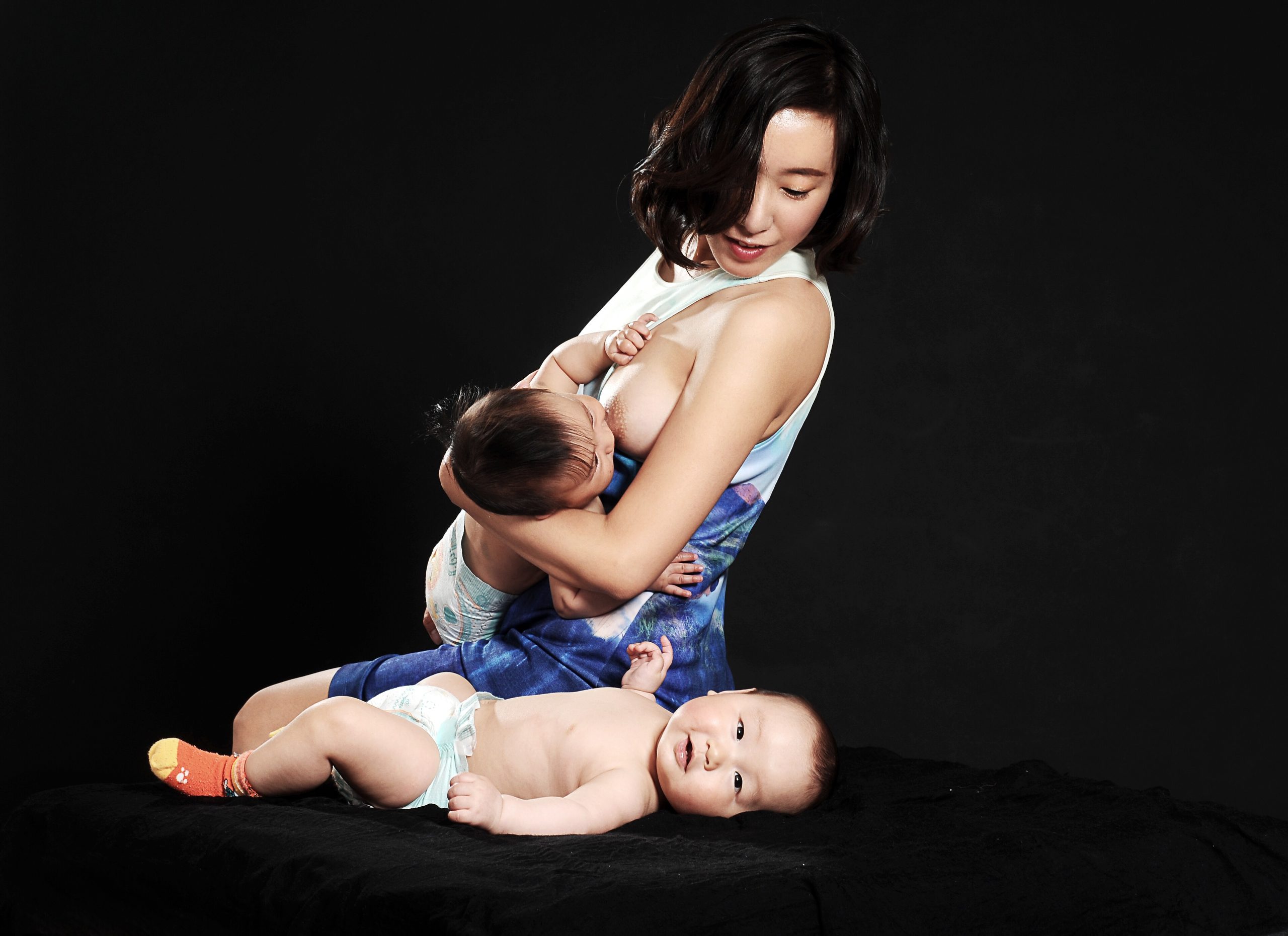Marsha Walker, 国际认证泌乳顾问注册护士
●正常胎儿的胃肠道是无菌的
●分娩方式影响肠道微生物的形成
阴道分娩(顺产)的新生儿植入了母亲体内的细菌
剖宫产出生的新生儿最早接触的细菌可能来自外部环境、其他婴儿或护理人员,他们是细菌的载体
剖宫产出生的新生儿的主要肠道菌群可能受到长达六个月的干扰 (Gronlund et al, 1999)
● 不良微生物或非母体植入的高风险人群包括:剖宫产的婴儿、早产儿、需要重症监护的足月婴儿,或与母亲分离的婴儿
需要重症监护的婴儿获得肠道微生物较慢,建立双歧杆菌菌群也较慢
肠道细菌植入迟缓,种类有限,可能引发恶性后果
用母乳调节、影响新生儿的肠道,可作为防治肠道疾病的良方 (Dai & Walker, 1999)
● 使用抗菌剂的新生儿体内可能发生严重生态失调
在新生儿监护病房降低新生儿生态失调的措施之一是给他们喂新鲜的母乳 (Zetterstrom et al, 1994)
● 母乳宝宝和奶粉宝宝的肠道菌群不同
母乳宝宝肠道pH值较低,约为5.1-5.4(酸性环境),在最初的六周内以双歧杆菌为主,还有大肠杆菌,拟杆菌,梭菌和链球菌等降低病原的(致病)微生物
依据饮食类型建立的菌群出现在第四天,母乳宝宝肠道含有47%的双歧杆菌,奶粉宝宝仅为15%。此外,奶粉宝宝肠球菌含量较多。(Rubaltelli et al, 1998)
奶粉宝宝肠道pH值较高,约为5.9-7.3, 同时含有较多腐坏细菌
母乳和人工混合喂养的婴儿,在头四周肠道平均pH值为5.7-6.0,第六周降至5.45
如果在婴儿出生后最初七天内添加奶粉,将推迟形成体内的强酸性环境,该环境的潜能可能永远无法彻底发挥
添加了奶粉的母乳宝宝形成的肠道菌群及其行为类似奶粉宝宝
● 新生儿出生后,胃肠道经历了迅速的发育和成熟过程
出生时宝宝的肠道功能不成熟,免疫发育不完善
胃肠道粘膜连接紧密,可能需要发育数周以上才能成熟,才能完全隔离蛋白质及致病菌
母乳宝宝肠道渗透率降低得比奶粉宝宝快 (Catassi, et al, 1995)
开放且不成熟的粘膜可能导致坏死性小肠结肠炎、腹泻及过敏
初乳及乳汁中分泌型免疫球蛋白A可以覆盖肠道,在新生儿肠道功能不完善时提供被动型免疫
母体分泌的免疫球蛋白A具有抗原特异性,抗体针对宝宝直接接触环境中的病原体
母亲吞咽、吸入或以其他方式接触致病菌时,在体内合成抗体
这些抗体会忽略正常肠道中的有益细菌,专门对抗疾病,却不会引起发炎
● 在母乳宝宝肠道屏蔽形成前不应当喂配方奶
开始喂食添加品后,母乳宝宝的肠道菌群类似奶粉宝宝,不再以双歧杆菌为主,出现了专性厌氧菌 (Mackie, Sghir, Gaskins, 1999)
即使给母乳宝宝添加很少量的奶粉(每24小时1次),其肠道菌群也会向奶粉宝宝转变 (Bullen, Tearle,Stewart, 1977)
添加固体食物会导致母乳宝宝的肠道系统发生剧烈变化,肠杆菌和肠球菌迅速增长,逐渐被拟杆菌、梭状芽胞杆菌和厌氧链球菌定植。 (Stark & Lee, 1982)
添加配方奶后,母乳宝宝的肠道菌群在24小时之内变得几乎与成人肠道菌群没有区别 (Gerstley, Howell, Nagel, 1932)
即使恢复纯母乳喂养,也需要2-4周的时间,肠道才能恢复成有利于革兰氏阳性菌群的环境 (Brown & Bosworth, 1922; Gerstley, Howell, Nagel, 1932)
● 来自易感家族的宝宝,出生头三天内,可能只需一瓶配方奶(错加、非必需的添加、或者是计划中添加),就足以使其对牛奶蛋白过敏。(Host, Husby, Osterballe, 1988; Host, 1991) 在新生儿育婴室应当避免即使是小剂量的过敏源,防止牛奶引起的过敏反应。(Cantani & Micera, 2005)
如果新生儿父母有一人有遗传性过敏,则其患病风险在37%;如果父母双方都是遗传性过敏,根据他们相同或不同的病因,62-85%的新生儿可能患病。不管家人情况如何,这些宝宝脐带血中免疫球蛋白E的含量增高。(Chandra, 2000)
牛奶蛋白和人乳蛋白存在交叉反应 (Bernard et al, 2000),只要1纳克的牛乳清蛋白B就可以感染一个易感婴儿。(Businco et al, 1999)
具有过敏风险的母乳宝宝可以用低变应原的奶粉补充;6个月以内不应当添加固体食物,1岁以内不应当添加奶制品,妈妈应当在自己的饮食中完全避免花生、坚果、牛奶、鸡蛋和鱼。(Zieger, 1999; AAP, 2000)
冷冻的母乳是母乳宝宝的最好加餐,特别是高风险的易感人群;如果没有储存的母乳,推荐用深度(非部分)水解蛋白的奶粉 (Oddy et al, 2003)
对哮喘和过敏的研究结果可能因为宝宝早期喝过配方奶而受到干扰,小剂量的配方奶对宝宝的免疫系统可能造成伤害;即使母亲之后主要是纯母乳喂养,这一点也应当在研究分析时加以考虑。
● 对于易感家族的宝宝,过早接触牛奶可能增加患胰岛素依赖型糖尿病的风险 (Mayer et al, 1988; Karjalainen, et al, 1992)
母乳中人胰岛素的含量比牛奶中牛胰岛素含量高;婴儿配方奶中胰岛素含量很低,甚至没有;胰岛素促进肠道成熟。
在动物试验中,口服人胰岛素刺激肠道免疫系统产生活跃细胞机制,以抑制自身免疫性糖尿病的发展
缺乏人胰岛素的配方奶可能破坏胰岛素的耐受性,并导致I型糖尿病的发展 (Vaarala et al, 1998)
在生命的最初几个月避免摄入牛奶蛋白,可能会减少以后发生胰岛素依赖型糖尿病,或延缓其在易感个体发病 (AAP, 1994)
纯母乳喂养至少4个月的婴儿患导致β细胞自身免疫的血清转换风险较低
母乳喂养时间较短或者过早添加牛奶为主的配方奶粉容易导致易患I型糖尿病的儿童出现β细胞自身免疫性疾病 (Kimpimaki et al, 2001)
对牛奶蛋白免疫记忆的发生和发展是导致胰岛素依赖型糖尿病的第一步 (Kostraba, et al, 1993)
肠道细胞形成紧密的封闭层之前接触牛奶就可能引发过敏
在感染引起胃肠道变化、抗原穿越被破坏的粘膜、启动免疫反应时,接触牛奶可能引发过敏
如果肠道中的牛奶蛋白破坏粘膜,引起肠道发炎,破坏了细胞连接成分,可能引起过敏。其他牛奶蛋白的干扰也可能引起过敏 (Savilahti, et al, 1993)
非母乳喂养或短期母乳喂养的儿童,会更多患β细胞自身免疫性疾病。过早接触牛奶的宝宝,直到5岁,患I型糖尿病的风险都会增加。(Holmberg et al, 2007)
美国儿科学会营养委员会、欧洲儿科变态反应和临床免疫学会及欧洲儿科胃肠病、肝病和营养学会,一致建议将纯母乳喂养作为预防食物过敏的手段。(Zeiger, 2003; Muraro, et al, 2004)
What if just one bottle of formula?
References
American Academy of Pediatrics, Work Group on Cow’s Milk Protein and Diabetes Mellitus. Infant feeding practices and their possible relationship to the etiology of diabetes mellitus. Pediatrics 1994; 94:752-754
American Academy of Pediatrics, Committee on Nutrition. Hypoallergenic infant formulas. Pediatrics 2000; 106:346-349
Bernard H et al. Molecular basis of IgE cross-reactivity between human beta-casein and bovine beta-casein, a major allergy in milk. Mol Immunol 2000; 37:161-167
Brown EW, Bosworth AW. Studies of infant feeding VI. A bacteriological study of the feces and the food of normal babies receiving breast milk. Am J Dis Child 1922; 23:243
Bullen CL, Tearle PV, Stewart MG. The effect of humanized milks and supplemented breast feeding on the faecal flora of infants. J Med Microbiol 1977; 10:403-413
Businco L, Bruno G, Giampietro PG. Prevention and management of food allergy. Acta Paediatr Suppl (430) 1999; 88:104-109
Cantani A, Micera M. Neonatal cow milk sensitization in 143 case-reports: role of early exposure to cow’s milk formula. European Rev Medical Pharnacological Sciences 2005; 9:227-230
Catassi C, et al. Intestinal permeability changes during the first month: effect of natural versus artificial feeding. J Pediatr Gastroenterol Nutr 1995; 21:383-386
Chandra RK. Food allergy and nutrition in early life: implications for later health. Proc Nutr Soc 2000; 59:273-277
Dai D, Walker WA. Protective nutrients and bacterial colonization in the immature human gut. Adv Pediatr 1999; 46:353-382
Gerstley JR, Howell KM, Nagel BR. Some factors influencing the fecal flora of infants. Am J Dis Child 1932; 43:555
Gronlund MM, et al. Fecal microflora in healthy infants born by different methods of delivery: permanent changes in intestinal flora after cesarean delivery. J Pediatr Gastroenterol Nutr 1999; 28:19-25
Holmberg H, Wahlberg J, Vaarala O, et al. Short duration of breastfeeding as a risk factor for B-cell autoantibodies in 5 year old children from the general population. Br J Nutr 2007; 97:111-116
Host A, Husby S, Osterballe O. A prospective study of cow’s milk allergy in exclusively breastfed infants. Acta Paediatr Scand 1988; 77:663-670
Host A. Importance of the first meal on the development of cow’s milk allergy and intolerance. Allergy Proc 1991; 10:227-232
Karjalainen J, Martin JM, Knip M, et al. A bovine albumin peptide as a possible trigger of insulin-dependent diabetes mellitus. N Engl J Med 1992; 327:302-307
Kimpimaki T, et al. Short-term exclusive breastfeeding predisposes young children with increased genetic risk of Type 1 diabetes to progressive beta-cell autoimmunity. Diabetologia 2001; 44:63-69
Kostraba JN, Cruickshanks KJ, Lawler-Heavner J, et al. Early exposure to cow’s milk and solid foods in infancy, genetic predisposition, and risk of IDDM. Diabetes 1993; 42:288-295
Mackie RI, Sghir A, Gaskins HR. Developmental microbial ecology of the neonatal gastrointestinal tract. Am J Clin Nutr 1999; 69(Suppl):1035S-1045S
Mayer EJ, Hamman RF, Gay EC, et al. Reduced risk of IDDM among breastfed children. The Colorado IDDM Registry. Diabetes 1988; 37:1625-1632
Muraro A, Dreborg S, Halken S, et al. Dietary prevention of allergic diseases in infants and small children. Part III: Critical review of published peer-reviewed observational and interventional studies and final recommendations. Pediatr Allergy Immunol 2004; 15:291-307
Oddy WH, Peat JK. Breastfeeding, asthma, and atopic disease: an epidemiological review of the literature. J Hum Lact 2003; 19:250-261
Rubaltelli FF, et al. Intestinal flora in breast and bottle-fed infants. J Perinat Med 1998; 26:186-191
Savilahti E, Tuomilehto J, Saukkonen TT, et al. Increased levels of cow’s milk and b-lactoglobulin antibodies in young children with newly diagnosed IDDM. Diabetes Care 1993; 16:984-989
Stark PL, Lee A. The microbial ecology of the large bowel of breastfed and formula-fed infants during the first year of life. J Med Microbiol 1982; 15:189-203
Vaarala O, et al. Cow milk feeding induces antibodies to insulin in children – a link between cow milk and insulin-dependent mellitus? Scand J Immunol 1998; 47:131-135
Zetterstrom R, et al. Early infant feeding and micro-ecology of the gut. Acta Paediatr Jpn 1994; 36:562-571
Zieger R. Prevention of food allergy in infants and children. Immunology & Allergy Clinics of North America 1999; 19(3)
Zeiger RS. Food allergen avoidance in the prevention of food allergy in infants and children. Pediatrics 2003; 111:1662-1671 (Suppl)

